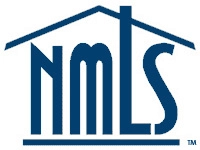How to Get Approved for a House
Buying a house is an exciting milestone, but getting approved for a mortgage can often feel overwhelming. Understanding the process and requirements can significantly improve your chances of approval. Here are the key steps to help you get started on your journey to homeownership.
1. Check Your Credit Score
Your credit score plays a crucial role in the mortgage approval process. Lenders use it to assess your creditworthiness. A higher credit score can lead to better interest rates and terms. Aim for a score of at least 620, though higher scores can open more doors. You can check your score through credit report websites or your bank.
2. Save for a Down Payment
Having a substantial down payment can improve your chances of mortgage approval. It demonstrates financial stability and reduces the lender’s risk. While 20% is the traditional benchmark, many lenders offer programs with lower down payment requirements. However, keep in mind that a larger down payment can save you money on interest and private mortgage insurance (PMI).
3. Manage Your Debt-to-Income Ratio (DTI)
Lenders look at your debt-to-income ratio to determine if you can manage monthly mortgage payments. This ratio compares your monthly debt payments to your monthly income. Ideally, keep your DTI under 36%, with 28% or less going towards housing costs. Paying down existing debt and not taking on new debt can help improve this ratio.
4. Gather Financial Documents
Be prepared to provide several documents during the mortgage application process, including:
- Proof of income (pay stubs, tax returns, W-2s)
- Bank statements
- Proof of employment
- Identification documents
Having these documents ready can streamline the application process and demonstrate your financial reliability to lenders. What Documents Do I Need When Getting a Mortgage?
5. Get Pre-Approved
Before you start house hunting, consider getting pre-approved for a mortgage. This involves a lender reviewing your financial situation and determining how much you can borrow. A pre-approval letter shows sellers you are a serious buyer and can give you a competitive edge in a hot housing market. How to Apply for a Mortgage: A Step-by-Step Guide
6. Choose the Right Type of Mortgage
There are various types of mortgages available, and choosing the right one depends on your financial situation and homeownership goals. Common options include:
- Conventional Loans
- FHA Loans
- VA Loans
- USDA Loans
- Other Mortgages
Research each type and discuss with your lender to find the best fit for your needs.
7. Maintain Financial Stability
It’s crucial to maintain financial stability during the mortgage application process. Avoid making major purchases, changing jobs, or opening new credit accounts, as these actions can affect your credit score and overall financial situation, potentially jeopardizing your mortgage approval.
8. Consult with a Mortgage Advisor
Finally, consider consulting a mortgage advisor. These professionals can offer personalized advice, help you navigate the complexities of mortgage applications, and guide you towards the best mortgage products for your situation. Their expertise can be invaluable in securing your mortgage approval. How to Contact North Star Mortgage Network
Following these steps can set you on the path to mortgage approval and getting the keys to your dream home. Good luck!














